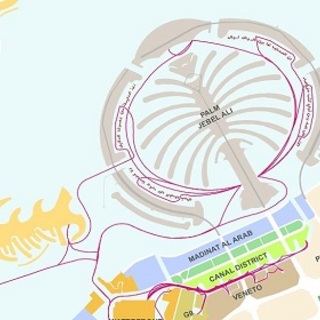
Public Water Transport Study, Dubai
BMT reviewed the operational feasibility of an extended ferry route along the full length of the Dubai Creek.
BMT supported Parsons Brinckerhoff in reviewing how an extended ferry route could operate along the full length of the Dubai Creek after the planned replacement of the Floating Bridge by a crossing, permitting unrestricted access.
A methodology for site selection of potential terminal sites was developed, and five new terminal locations and a landing facility for special events were identified. The study included:
Sustainability – The ferry fleet was closely matched to the forecast ridership to ensure that an appropriate provision of service was provided, without over investment in systems.
Innovation – The pier network was developed as a modular “kit of parts” that would ensure consistency of passenger navigation through different stations, minimise CAPEX through common specifications, and provide ease of expandability.
Added Value – The study provided early foresight on the opportunity, costs and constraints associated with the extension of ferry services into the creek.

BMT took part in a review of the opportunities for a public marine transport system as part of a previously commissioned waterfront master plan.

BMT supported Parsons Brinckerhoff in developing the first marine transport masterplan for Dubai. A transport model integrating inland and offshore modes can realise significant efficiencies and benefits.

Jeddah's coastal areas have seen significant growth in recent years. BMT proposed a network that was aligned with the significant recreational areas and attractions being developed along the coastline.

A modular floating platform, currently the world's largest floating stage (2018) was constructed and moored at site in Marina Basin in Singapore. The multi-purpose structure has been the site for important cultural events since 2007, bringing a marine solution to land-based challenges.